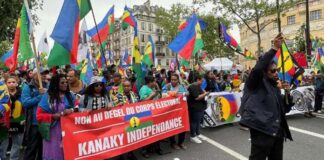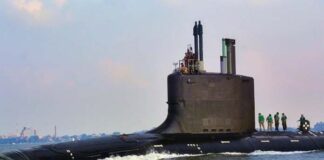In December Australia’s last combat troops in Afghanistan left after 12 years. According to Tony Abbott the withdrawal was, “Not with victory, not with defeat, but with, we hope, an Afghanistan that is better for our presence here”, in an effective admission that the West has lost the war.
Far from making things “better” Western occupation has been a disaster for Afghanistan.
The fake commitments to democracy, to Afghan women, or building Afghan schools are now long forgotten. President Hamid Karzai’s re-election in 2009 relied on massive corruption and vote-rigging. For the last two years the country has been ranked as the most corrupt in the world.
The US has brought back into power the same ruthless warlords who destroyed the country in the 1990s. Several of them, like Mohammed Fahim and Ismail Khan, are ministers in the Afghan government.
At the end of this year the last US and British combat troops will quit the country too. They have failed to defeat the Taliban, which now controls large areas of the country. In a humiliating climb-down, the US has agreed to talks with the Taliban—the enemy the warmongers said they went in to defeat.
The return of the Taliban is all the more remarkable given there was little popular support for them in 2001. It took almost three years after the invasion for significant military resistance to the Western occupation to develop.
It came after continual US airstrikes that saw thousands of civilians bombed and wedding parties, funerals and whole families killed. Even the US-installed President Karzai has demanded an end to these attacks. Overall at least 15,000 Afghan civilians have died in the war.
The war also saw over 2000 US troops killed and 20,000 wounded. More than 20,000 Australians fought in Afghanistan, with 260 wounded and 40 killed. The Australian government has put close to $8 billion into the conflict to date.
Shamefully the commitment to the US alliance that dragged Australia to war was bipartisan to the end. Labor leader Bill Shorten stood shoulder to shoulder with Tony Abbott telling troops before withdrawal, “You make us proud to be Australian”.
Afghanistan has been Australia’s longest war, and has become one of its least popular. Two thirds of Australians initially supported the invasion in the aftermath of 9/11, but by mid-2013 69 per cent wanted troops out. A recent CNN poll in the US found that a staggering 82 per cent of Americans also oppose the war.
The US has spent $100 billion to “rebuild” Afghanistan, but there is little to show for this money.
Australia’s efforts have been no better. According to Kabul-based journalist Jeremy Kelly, the Australian Defence Force claimed “a rise in the number of schools from 34 in 2006 to 205” in 2012. But in Chora “only one of the 32 schools supposedly open actually has students attending’’.
At a Senate hearing last year Defence admitted that they had no information on 31 out of 48 projects, on which they had spent $34 million.
War aims
The real motives for the war were boosting US power in control of Central Asia and restoring its imperial pride. The 9/11 attacks had made the US look weak, and required a demonstration of US military might to the world.
Invading Afghanistan was also the cover for establishing a string of US bases in the former Soviet republics to its north. The US also wanted to run an oil pipeline through Afghanistan from the Caspian Sea, without having to go through Russia or Iran.
Some on the left have been wary of the Afghan resistance because it is led by the right-wing and Islamic Taliban. But their support is due to the fact they are the only people inside Afghanistan that have consistently opposed Western occupation. Secular forces and parts of the left disturbingly sided with the occupation, from former Afghan communists to Western NGOs and feminists.
The West will undoubtedly blame any violence that occurs after they pull out on Afghans themselves. But we should never forget who is really to blame. The West has left Afghanistan in a mess at the mercy of squabbling warlords, and produced a revival of the Taliban.
Some Western troops will remain as trainers and advisers to the Afghan army, including at least 10,000 US troops and between 300-400 Australians. The US and Australia will continue to fund the Afghan Army as they try to salvage what they can for Western imperial influence.
Afghanistan after the occupation faces a difficult future. But it is only the end of Western control that promises it any hope.
By Chris Breen





